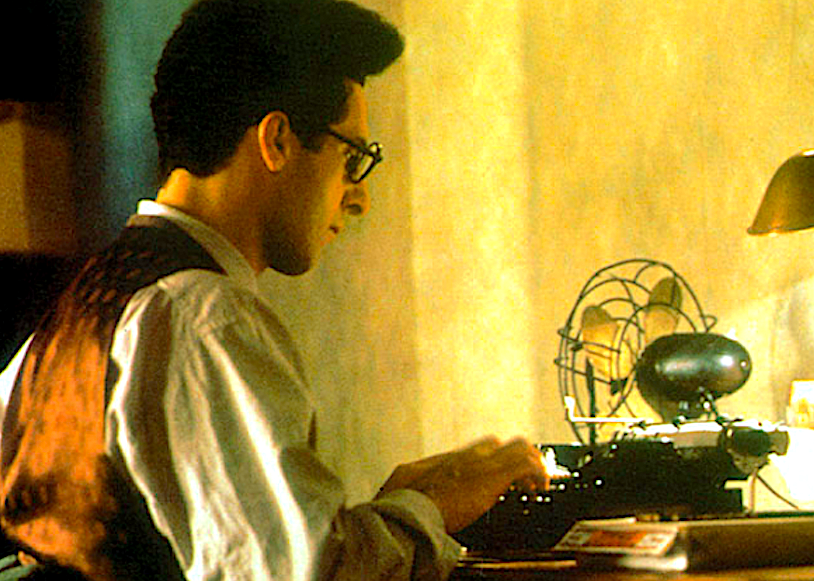1) Allow healthy separation between you and the first draft
A bit of separation between you and your script is healthy. After a few weeks, you might even forget every word that you wrote. That is a good thing. It’s important to look at your script with fresh eyes, as a new reader would. Reread all in one sitting. Don’t take notes. Really. Put the pen down. Trust us—you don’t want to waste time correcting punctuation in a scene that may end up being cut. Reread without editing, and just take in your script as a whole.
–Jennifer Arzt, “Revision Frenzy”
2) Invite your friends to give honest feedback
I workshopped my script like the way I workshop my standup: I invited friends over to read it out loud in my living room and then fed them pizza. The pizza was excellent. The script often wasn’t. So I’d get my friends all drunk on pizza and then ask them hard questions like: “What do you like least about the script? Be honest. I can take it.” That’s where I learned the most.
—Mike Birbiglia’s 6 Tips for Making It Small in Hollywood. Or Anywhere, New York Times, August 30, 2016
3) Be selective with both positive and negative criticism
Remaining open to criticism is not the same thing as indiscriminately agreeing to any and all suggestions. Dumb, negative, jealous, destructive, backbiting criticism is by no means the only problem writers face. Affirmation can be a problem too. For though approval is a lot more fun than scorn, it can be every bit as deadly. It is a short walk from praise to patronization.
–Richard Walter, Essentials of Screenwriting (1988)
4) Use these nine questions to pinpoint weak spots
- Does my hero lead the action?
- Do my characters “talk the plot”?
- Is the bad guy bad enough?
- Does my plot move faster and grow more intense after the midpoint?
- Is my script one-note emotionally? All drama or comedy?
- Is my dialogue flat?
- Do my minor characters stand out from each other?
- Does the hero’s journey start back as far as it can go?
- Is it primal?
–Blake Snyder, Save the Cat! (2005)
5) Consider these nineteen common screenplay shortcomings
- The story begins too late in the script
- The scenes are void of meaningful conflict
- The script has a by-the-numbers execution
- The villains are cartoonish, evil-for-the-sake-of-evil
- The character logic is muddy
- The female part is underwritten
- The narrative falls into a repetitive pattern
- The conflict is inconsequential, flash-in-the-pan
- The protagonist is a standard issue hero
- The script favors style over substance
- The ending is completely anti-climactic
- The characters are all stereotypes
- The script suffers from arbitrary complexity
- The script goes off the rails in the third act
- The script’s questions are left unanswered
- The story is a string of unrelated vignettes
- The plot unravels through convenience/contrivance
- The script is tonally confused
- The protagonist is not as strong as he or she needs to be
–From All The Things That Are Wrong With Your Screenplay In One Handy Infographic, Fast Company, December 9, 2013
6) Do a read-through from the point of view of each character
Do a read-through from the point of view of each character to make sure each character’s story is working, and the ‘voice’ of each character is consistent. Look for things to cut, things to simplify, stuff that’s still in there because you loved it at one time but doesn’t fit any more. he revision may include small and large changes, and each revision will probably take as long to accomplish as the original script took to write.
–Terry Rossio, “23 Steps to a Feature Film Sale,” Wordplay, December 6, 1998
7) Make sure your story has broad emotional range
If your script feels one-note emotionally, go back and flesh it out using all the colors in the palette. Where is your lust scene? Where is your frustration scene? Where is your scary scene? And if you don’t have these, take a scene that’s funny or just dramatic and try to play it for one of the missing colors.
–Blake Snyder, Save the Cat! (2005)
8) Eliminate nonessential dialogue and scenes
There are only two rules I follow when writing: one, keep it interesting and, two, keep it moving. The second one is important. A lot of people fall in love with pieces of dialogue or expressing their personal opinion through the characters. It’s important to understand the point of the scene in the wider narrative and character journey and then get to the point as efficiently as possible. Sometimes that can be tough to do especially if you’ve got a particularly funny joke or exchange of dialogue that you’re attached to, it can be very hard to let that go.
–Andy Friedhof, Black List interview, Go into the Story, April 9, 2016
9) Make sure each story element relates to the climax
Through careful examination of the whole script, the writer can ensure that everything that leads up to the climax sets up the climax, relates to the climax, or otherwise is somehow justified by the existence of the climax. Anything that doesn’t support the climax, enhance it or predicate it in someway has to be cut. The interesting thing about storytelling is that once a writer has envisioned the perfect payoff, the story that builds up to it often needs tweaking and adjustments in order to form a tight puzzle around it. This reshaping helps make the rest of the story fit well with the climax, so that each act builds upon the previous one and everything feeds smoothly into the ending. In this way, the path determines the outcome, but at the same time, the outcome determines the path.
–Candace Kearns Read, “Writing a Screenplay Backwards”

